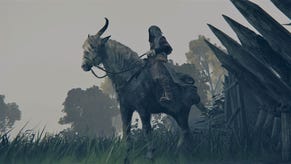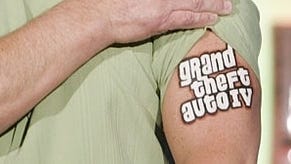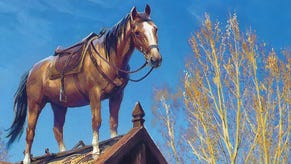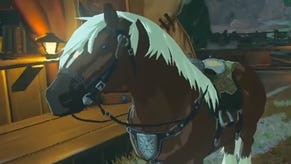The Legend of Zelda: Twilight Princess
Deserves a spotlight.
Kristan's take
Multitasking
Being able to target boss monsters' weak spots is a fairly predictable use of the fledgling technology (and might explain why most of the early ones are so damned easy), but the learning curve is well judged. As you progress, you'll be entrusted with all manner of ways of manipulating your environment, which not only makes some of the level design absolutely fiendish, but makes progressing through each section enormously satisfying. Spotting that switch in the ceiling or that suspiciously fragile bit of scenery encourages you to get to know where and when to use your equipment - and when you're also faced with enemies that can only be taken down with certain weapons, it becomes a lot more interesting in the process. And once you're in the position of having to multitask, it becomes apparent how solid the control system actually is. For example, one section tasks you with not only riding a horse and attacking a set of enemies on the move, but ensuring someone's safe passage. Having to aim your weapon, steer your horse, keep its speed high and toggle between two different bits of equipment would normally be a nightmare, and to begin with you might curse the game for asking rather too much of you. But somehow - with a little bit of practice - the process suddenly clicks and feels surprisingly fluid, and finally proves that high speed chases don't have to be played on rails.
Occasionally, though, your admiration for the game will dip slightly. Decisions like taking the camera control away from the player only half work and directly result in unnecessary frustration on a few notable occasions when you need it most. Most of the time you won't even notice, and the effective Z-lock approach helps enormously when you're in combat. But when you're negotiating platforms, the tendency for the game to unhelpfully place the camera at a slight angle results in misdirected jumps and frustrating backtracking (the lava level, I'm looking at you). Repeat failure results in having to try and force the camera behind you so you can see the angle of your leap - but sometimes the camera just has a complete fit or wrestles control back like a disobedient child. Fortunately problems here don't pop up enough to detract from the game to any significant degree, but, nevertheless, they do pop up.
Save my soul
What is unquestionably annoying is the knackered old save system. Again, in most circumstances you won't even notice, but when you're playing through one of the platform/puzzling sections any save will always put you back at the beginning of that section no matter how far you've come. Sure, your progress in terms of puzzles and enemies defeated is recorded, but it still forces you to traverse through often tricky sections when it really shouldn't be necessary in this day and age.
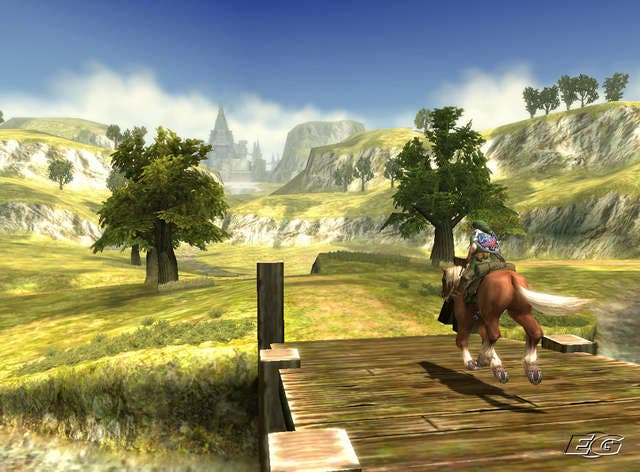
Also somewhat bothersome is the way the game is often vague about where you're supposed to go next. Quite often, a long section of narrative after the end of a section will make reference to a place or task you're supposed to do next, but then fails to reinforce that with something as simple as a marker on your map. Your helper, Midna, is often plain sarcastic when asked for help, telling you to "hurry up" and go to find someone who could be literally anywhere on the map. Even when you know where to go and what to do, it's not always clear how to do it when you get there. The maddening fishing task right at the beginning part of the game is a classic example of the game making daft assumptions that leave the player high and dry and wandering around (often for ages) with no idea what they did wrong. And when you do find out, you feel pretty dumb for not realising, but also justifiably mad at the designers for not tapping you on the shoulder for being an idiot. Some players won't ever encounter such situations and put this down to player incompetence, but trust us, it's quite frustrating when you hit a cul-de-sac like this.
One thing that's being hotly debated about Twilight Princess is whether it really cuts it technically in the modern next gen age. Arguably it's a GameCube game in essence, so perhaps it's not really fair to even think of it as a true example of what the Wii can do. But even with that taken into account, it's an undeniably beautiful game that outshines most games purely through the levels of artistry on show. Fair enough, the texture detail's not great, and the 480p resolutions ensure that jaggies are in evidence - especially for the big screen owners among us, but you'll stop noticing the more nitpicky technical elements after about an hour. After that, it serves as a reminder that it's the quality of the gameplay and the overall experience of the game that's by far the most pertinent part of playing a videogame - and in that respect it's a game that ticks pretty much every box going.
Midi touch
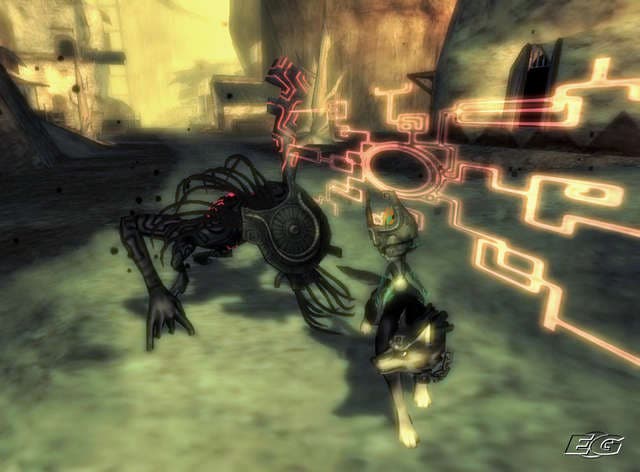
Sure, the synthesized audio's also pretty old school, but it feels deliberately so - as if the designers are playing as much on people's associations with past Zeldas as anything. Likewise, the absence of voiceovers will probably come as a relief to those used to the text-based narrative. Admittedly it flies in the face of modern videogame storytelling, and it does feel a curiously old-fashioned approach, but very endearing with it. It certainly doesn't detract from the game's ability to tell a fascinating yarn, and one that Zelda fans old and new will love every minute of.
As we mentioned before, it's an awesomely long game, and will take a big investment of your time to really get the most out of. We haven't even discussed the numerous mini-games, like fishing, flying, clawshot shooting, and the numerous collectibles that litter the game world (like bugs and Poe souls), or the challenge-based tasks that exist on the periphery of the main quest. It's a game that, all-told, could conceivably consume months of your life if you let it. But the best thing is to reinforce the notion that that Nintendo has somehow managed to create a sprawling, epic adventure of such a consistently high quality - yet is one of most easily digestible epics we've ever come across.
Twilight Princess is an incredible game on the whole, with so many peaks, so many magic moments that will live long in the minds of millions of gamers. Sure, there are times in the game when you want to shake Miyamoto and co by the lapels for including elements of the game which remain dogged by old-school convention, but they represent a flea bite on what is just a stunning and relentlessly enjoyable game. Regardless of whether you're a hardened series veteran or a wide-eyed newcomer, Twilight Princess is undoubtedly the best action adventure game for some time.

